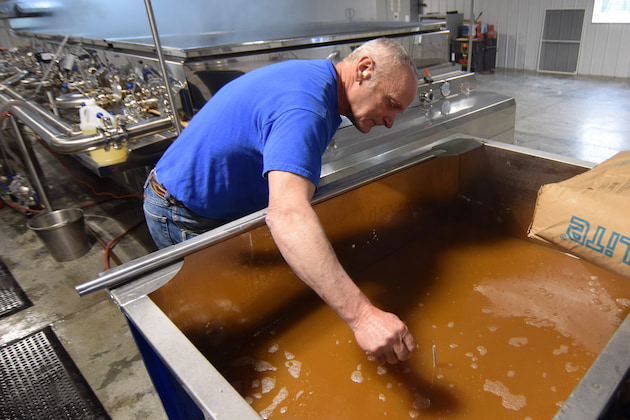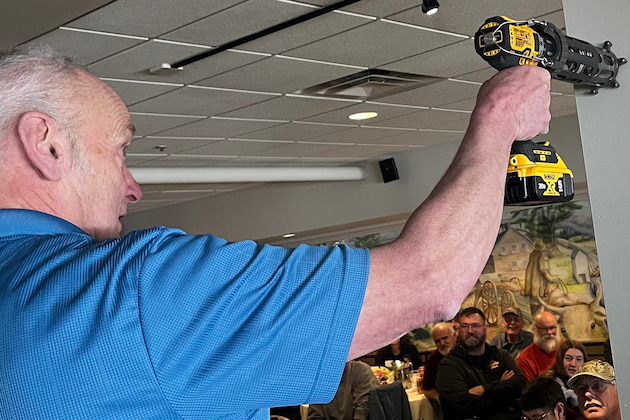Tapping & Tubing
Tips from Glenn: Goodrich shares his secrets
Tapping and other advice from Vermont legend
By PETER GREGG | FEBRUARY 14, 2023
PLYMOUTH, N.H.—Sugarmaking legend Glenn Goodrich was the featured speaker at the NHMPA annual meeting on Jan. 21, offering advice on tapping, vacuum and boiling.
“Getting a true round hole in the trees is essential,” Goodrich told producers on his tapping methods. Goodrich has a 160,000-tap operation in Eden, Vt. and Cabot, Vt. and is recognized as one of the U.S.’s premier sugarmakers, winning countless awards.
Goodrich says as he and his crew of tappers march from tree to tree, he estimates he taps a tree in 35 seconds before moving to the next one.
“I fire the drill to the highest speed the drill can spin,” he said, before sinking it into the tree at a maximum depth of no more than 2 inches, or sometimes just one inch on marginal trees.
After the hole is drilled, he uses a nylon-headed tapping mallet to knock in a spout, but with not too much force.
“It’s all in the wrist,” he said. “We’re not knocking in the spout with a 24-ounce Estwing hammer as hard as we can. Don’t do that.”
He said most taps usually get “six hits,” with the mallet.
Once he’s tapped, the vacuum generally runs continuously at the farm.
“I will shut off the pumps only if I know the trees will be frozen for at least 10 hours,” he said.
Keeping vacuum high is important.
“The tighter we keep the vacuum, the less chance for bacterial growth,” he said. “If you can keep every spout on the line at 27 inches of vacuum, you will not grow bacteria in your lines.”
Goodrich made an interesting point about vacuum—“We do less damage to trees on deep vacuum,” he said.
“When you check a tree there is less streaking inside a tree on deep vacuum than you ever got with a bucket,” he said, citing the sanitation benefits of high vacuum over gravity.
“Keep that vacuum tight and don’t be satisfied with “that’s good enough,” he said.
For boiling, Goodrich said he keeps his syrup levels low in the pans, no more than a 1 inch depth in the front and 1 inch above the flues in the back pan.
To avoid making syrup in the middle channels of the rig, he suggested drawing the syrup out of the pan, separating the “almost syrup” from the “finished syrup” and repouring them into the pan in the proper locations, to balance out the rig.
“Pour slowly,” he said.
































